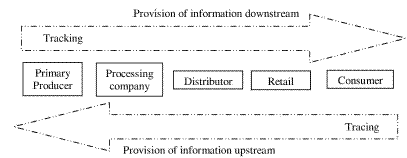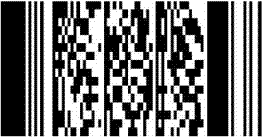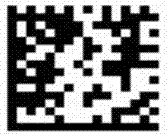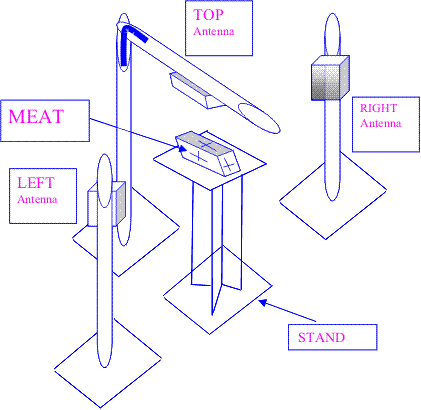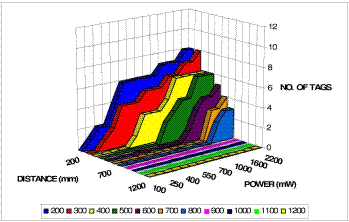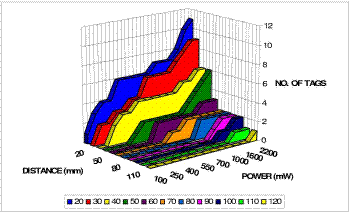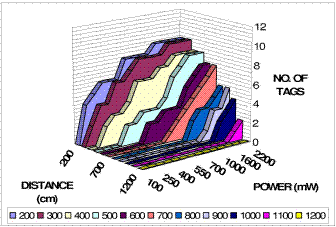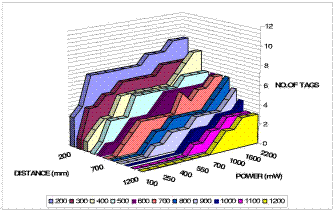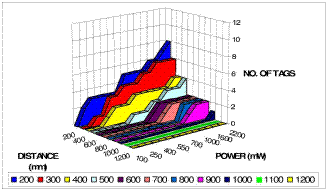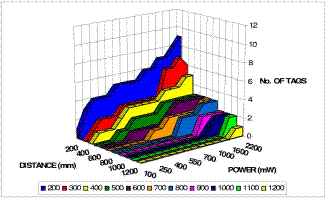|
|
|
ELECTRONIC TRACKING AND TRACING IN FOOD AND FEED TRACEABILITY Gashaw Ayalew, Ultan McCarthy, Kevin McDonnell, Francis Butler, Paul B. McNulty, Shane M. Ward
ABSTRACT Automatic identification and Electronic Data Interchange (EDI) are two most applicable electronic tools for food and feed traceability. This work has presented the main features of printed graphic identifiers, radio frequency identifiers, and electronic data interchange protocols that have potential for the traceability of food and feed. INTRODUCTION Traceability, in relation to food, may be defined as the ability to follow a product batch and the ingredients of the product batch forward through the production process via the distribution chain to the immediate customer and backwards to the supplier of the ingredients, services and packaging, and processes (see Figure 1). In terms of input to the food chain, these products refer to food, feed for consumption by food-producing animal, food producing animals or substances through all stages of production and distribution [Cheftel, 2005, Schwägele, 2005, The European Commission, 2002, FSA-UK, 2002]. While authentication of products and processes are best carried out using biometric and bio-analytical methods [Schwägele, 2005, Prache et al., 2005], operational efficiency and accuracy of information handling is best served using automatic identification and data capture (EIDC). This is implemented using electronic identification tools and related data interchange infrastructure [Schwägele, 2005]. A functional traceability system must identify units or batches of all ingredients and products gather and properly organize temporal and spatial information on moved and transformed products, and consists of a system linking these data [FSA-UK, 2002]. As voluntary and mandatory labeling information expands mainly as a result of widening traceability requirements by legislation and consumer preference [Cheftel, 2005], so does the information to be recorded, transmitted, and stored for further use. The implication is that the data carriers need to match the requirement through larger sizes and/ or greater complexity [Zebra Technologies, 2004] with the accompanying higher costs.
Desirable features of electronic traceability systems are conformance to existing global identification and communications standards in order to improve accuracy and speed of traceability information [FSA-UK, 2002] and smooth operation in the system, unique identification internationally [EANI, 2002], overall cost-effectiveness and data security. Technologies enabling traceability may be categorized into automatic identification and data management in the tracking and tracing of animals, food and feed, water, and the tracing of food/ and feed (where appropriate) ingredients to their sources. Previous reviews [FSA-UK, 2002] and studies (such as IDEA Project Team [2001]) show that electronic identification (EID) and electronic data interchange (EDI) are the best tools in delivering individual animal and product traceability. Although technologies are developing quickly and new ones may still be in development like the ZigBee [ZigBee Standards Organization, 2005], Finkenzeller [2003] and Swartz [1999] identify one- and two-dimensional barcodes (referred hereafter as printed graphic identifiers, PGIs), optical character recognition, magnetic stripes, RFID (smart cards included) and automatic biometrics (such as voice recognition, finger printing, and retinal scanning [Marchant, 2002]) as the most outstanding automatic identification technologies. Of these, PGIs, retinal scans, and RFID have direct relevance to food traceability [Schwägele, 2005]. Although retinal scans are proven to be an effective automatic identification tool [Marchant, 2002], they can only be practically used for identity verification purposes, as their operation requires checking against an existing database of retinal vascular images. This leaves PGIs and RFIDs for use in the tracking of food and feed products. This study reviews the features of major electronic identification and electronic data interchange tools used or which have potential of being used in traceability of food and feed, and a brief description of an ongoing study on the application of a UHF RFID system to meat traceability. AUTOMATIC IDENTIFICATION DATA CARRIERS Printed graphic identifiers This section deals with PGIs that are known with the generic name barcode. PGIs are constrained by the conflicting requirements of high-density information, reliable code reading, minimal cost of printing and minimal cost of reading equipment [Pavlidis et al., 1990], and accordingly various codes exist to satisfy one or more of these requirements. PGIs are attributed with merits such as low-cost (less than a cent); being accurately readable by machine with different symbologies offering differing levels of error detection/ protection; encoding possibilities for numeric, alphanumeric ASCII, and other characters; being well established; existence of different code forming materials and techniques such as metals, in addition to printed media; fast, line-of-sight readability with a wide range of equipment available catering for reading distances from direct contact to several metres; availability of wide range of symbol formation and printing software and hardware. Disadvantages of PGIs are low-capacity, typically less than 100 characters (linear codes) and at most 2335 alphanumeric characters (Data Matrix codes), dependence on symbology; requirement of line-of-sight; warping of label, and damage of symbol by hostile environmental factors such as moisture and friction; and being read-only [Acuity CiMatrix/Siemens, 2006; AIM, 2005; Jalaly and Robertson, 2005a, 2005b; Finkenzeller, 2003]. Linear barcode symbologies In use for over a quarter of a century [AIM, 2005], and more than a hundred encoding schemes, linear barcodes are still the most widely used PGIs. Linear barcodes encode information along one dimension with varying widths of parallel light and dark patterns. A linear barcode would typically contain guard bar patterns at its ends to enable the reader identify the beginning and end of a code, and to enable bi-directional reading. For the EAN-13 symbology, for instance, it is bar-space-bar (101) [Pavlidis, 2000] on both sides. The reader illuminates the code symbol and measures the reflected light, from which it determines the pattern in width and brightness variations and decodes based on the encoding table for that particular symbology [Zebra Technologies, 2006]. The most common linear barcodes are Code 39, pioneered by the defense and automotive industries; the Universal Product Code (UPC), first employed by the supermarket industry in 1973 and adopted by the EAN-13 (European Article Numbering) in 1976 for applications in the grocery industry; Codabar, used in high safety requirement applications such as blood banks and other medical/clinical fields; Interleaved 2-of-5 (ITF), used in automotive industry, goods storage, pallets, shipping containers and heavy industry; and Code 128 (which is the parent set of the EAN-128 code structure [Anonymous, 2004d]). Bar codes may encode only numeric data (e.g. UPC/EAN-13 and ITF), or all or part of the ASCII character set (e.g. Codes 39 and 128) [AIM, 2005, Finkenzeller, 2003]. The advantages of linear barcodes are simplicity and cheaper readers, whereas their major disadvantage is that they have limited data storage capacity, and hence their function only to carry indices to databases - in a number plate fashion. Also too small and/or low-resolution printing can challenge readability [Pavlidis, 2000]. Detailed structures and encoding techniques employed for selected linear barcodes are given in Pavlidis et al. [1990]. Two-dimensional (2D) symbologies There are two types of 2D symbologies - stacked and matrix type. The stacked symbols (e.g. Code 49 and PDF417 (see Figure 2) are structured in the form of a rectangular block consisting of numbers of rows, each of which is like a linear barcode. The matrix-type symbols (e.g. DataMatrix see Figure 2), Maxicode, and QR code) are made of an array of binary (black or white) cells placed in a grid. Individual matrix symbologies differ in the way input data is converted to a binary pattern, the way the pattern is placed on the grid, the grid size, and additional features needed to help locate the particular symbol in the field of view [Hahn & Joung, 2002]. 2D symbologies help overcome the analogue nature of encoding information in linear barcodes, by localizing the points where information is to be stored and only have to decide whether a location is black or white. They also offer greater data density compared to linear symbols. Furthermore, with some additional overhead, varying levels of immunity to error can be achieved [Acuity CiMatrix/Siemens, 2006, Anonymous, 2006]. 2D symbologies make the data density of PGIs more competitive to those of RFIDs (dealt with below), with a significantly lower cost [Pavlidis, 2000]. In this regard, 2D symbologies may be considered as the figurative mid-way house between linear barcodes and RFIDs, as they offer the sought data density at competitive price. Although other 2D symbologies also exist [Kato & Tan, 2005, Pavlidis, 2000], the PDF417 code (owing to its wide-spread use Pavlidis [2000]) and the Data Matrix code (as a representative matrix code) will be briefly discussed below.
The PDF417 Code PDF417 (where PDF stands for portable data file, a name attributed to 2D symbologies) is the most widely used 2D symbology. This symbology is a stacked code designed to provide significantly higher density than linear barcodes while keeping most of their advantages [Pavlidis, 2000; Kato & Tan, 2005]. It consists of redundant information in its many code words. This allows stitching of partial scans (using laser scanners), which enables not only error detection but also error correction. As this level of error correction capability (and hence level of redundancy) is set by the user, one can say that this symbology has an embedded facility for security versus density trade-off [Pavlidis et al., 1992]. Up to 50% of the label of PDF417 may be damaged or torn while maintaining readability [Anonymous, 2006]. The maximum data capacity of a PDF417 symbol is 1108 bytes, which is equivalent to 1850 ASCII characters (approximately 500 English words), or 2710 digits, and actual capacity is limited by the resolution of the scanner. As this symbology can also encode binary data it can be used to encode data like biometrics [Pavlidis, 2000], which is of a great significance in traceability. The Data Matrix (DM) Code The DM symbol has been used in many sectors of industry not so much for replacing other kind of graphic symbols, but extending barcode applicability to new areas [Acuity CiMatrix/Siemens, 2006]. DM codes can store up to 3116 numeric characters, 2335 alphanumeric characters, or 1555 bytes of binary data. Advantages of the DM symbology is encoding of data in real digital format and hence better tolerance to errors due to low-contrast printing, very high-information density, no need of predetermined orientation of code in relation to camera, and built-in error-correction capability. Information in DM codes can be retrieved from codes, parts of which have been damaged by as much as 20%. In one study [Hecker, 2006] the DM code provided 99.74% readability, including missed reads resulting from dirty tags, on over 1.5 million reads on reusable plastic containers. Added benefit of the DM code is that it is physically extensible within a wide range of sizes [Acuity CiMatrix/Siemens, 2006]. There is also a potential for further increase in data density if a multi-color DM code is adopted as proposed by Tarassenko et al. [2003]. Application of PGIs in traceability The FoodTrace system [Anonymous, 2005], that is proven to be an effective traceability system in the industry, at least in Ireland, is based on the EAN-128 code and Application Identifiers "AI"s (an application identifier may be considered as a description of the content of what follows it in an EAN-128 barcode structure) defined by GS1. EAN-UCC standards on traceability of beef specify protocols, using part of their internationally accepted numbering and bar coding system, in the traceability of beef. In the EAN-UCC standard document [EANI, 2002] the AIs have been defined for reference source identity (ear-tag number, for instance), country of origin, country of initial process, country of processing, and approval number of processor. In addition, AIs for country of birth, country(ies) of fattening, country of slaughter and approval number of slaughterhouse, approval number of first cutting hall, approval number of second cutting hall, approval number of third to ninth cutting hall, either ear tag number for individual cutting or batch number of cuttings have been defined and recommended by GSI [Anonymous, 2005] for inclusion on carcass labels. Radio Frequency Identification Radio Frequency Identification (RFID) systems are characterized by the contactless transfer of power and data between the reader (a.k.a. interrogator) and the tag (a.k.a transponder) [Finkenzeller, 2003]. For that reason, while a line-of-sight is necessary for barcode scanning, RFID scanners can read even when the tag is embedded for either aesthetic or security reasons [Want, 2004]. Another disadvantage associated with barcodes is that they are not re-programmable and are of limited storage capacity [Finkenzeller, 2003], although there is an improvement in this regard in 2D PGIs [Hecker, 2006]. It is believed that RFIDs overcome these disadvantages and would bring about automatic tracking of assets. The operation of an RFID system is as follows. An RFID reader transmits a radio-frequency electromagnetic field, the tag receives the field, and uses part of the absorbed energy (Such RFID tags are called passive tags, as opposed to active tags where they have on-board power sources) to identify itself by changing the load on the reader (for low (LF), and high frequency (HF) systems), or the field pattern around it (UHF systems) in such a way as to send a pre-programmed code, which in turn is decoded by the reader (LF, HF, and UHF refer to RFID standards in the wave bands of 9 - 135 kHz; 6.78, 13.56, and 27.125 MHz; and 433.920, 869.0 and 915.0 MHz, respectively. Microwave (> 3 GHz) tags also exist (Finkenzeller, 2003)). A software compiles and collates the ID with other collected information on a database [Kampers et al., 1999; Scharfeld, 2001]. RFID tags are also classified according to their specification. Class-0 RFID tags have, by definition, the following required functions [Auto-ID Center, 2003]:
EPCglobal also defines other four RFID tag classes based on the base class called Class-1. Class-1 identity tags are passive-backscatter tags with the minimum features of [Anonymous, 2004b]:
Class-2, Class-3, Class-4 or higher class tags do not, by specification, conflict with the operation of, nor degrade the performance of Class-1 tags located in the same RF environment [Anonymous, 2004b]. Class-2 tags possess higher functionality, and are passive tags with the following features above and beyond those of Class-1 tags:
Class-3 tags are semi-passive tags with the following anticipated features above and beyond those of Class-2 tags:
Class-4 tags are active tags with the following anticipated features above and beyond those Class-3 tags:
Table 1 contrasts linear barcodes with RFIDs. Although the technology is highly promising and there are desirable features for a traceability system such as security and high data capacity suitable for traceability information, they are still to be verified in situations where the effect of lossy and reflective materials must be reliably circumvented. The case in point is the fact that most, if not all food materials consist of lossy, moist contents, and/or conducting packages such as tins. Improvements attained with 2D symbologies have, at lease partially, overcome some of the setbacks listed in Table 1, especially regarding data quantity and data density. Application of RFIDs in traceability RFID has been considered the most important identification tool for the establishment of an effective traceability system [Wang et al., 2006]. RFID tags allow a manufacturer of food items to have an audit trail of moments of the retail unit's life, monitoring correct handling, storage, transportation and delivery. Some tags also have the capability to monitor temperature-controlled product on a per unit basis, hence allowing manufacturers to find out exactly where a temperature abuse occurred [Kumar & Budin, 2006]. The comparison of applications of Hazard Analysis and Critical Control Points (HACCP) on one hand, and RFID tracking on the other, for the purpose of reduction of recalls and the subsequent impact in the processed-food industry shows [Kumar & Budin, 2006] that:
Hecker [2006], on the other hand, argues that RFID promises to solve problems associated with linear barcodes by enabling item-level automatic tracking throughout the supply chain, but this promise has been tempered by accuracy problems, high costs, and environmental limitations when used around metals and liquids. Therefore, he argues it might be prudent to slow down a bit, until such time that these issues are fully addressed. This issue is even more important to the food and feed industries as such features are dominant in food and feed items. Another application of RFID technology in traceability is its use in animal identification. The radio frequency animal identification standard (ISO 11784/85) is a well tested [IDEA Project Team, 2001] application where animals are tagged and identified automatically, as required. The frequency of operation this standard specifies is 134.2 kHz [Kampers et al., 1999], owing to the low absorption rate, high penetration depth in non-metallic materials and water at this frequency [Finkenzeller, 2003]. The tag may be attached to the animal in one of three modes, namely ear tags, subcutaneous injection, or ruminal bolus (only applicable to ruminants). The bolus has been identified as the best tamper proof (99 % retention rate, and 100 % recovery rate) animal identification tag provided it is implanted at the right age and weight of animals [IDEA Project Team, 2001; Fallon et al., 2002]. THE EFFECTS OF DISTANCE, ANTENNA POWER, AND TYPE OF MEAT ON THE READING EFFICIENCY OF AN UHF RFID SYSTEM Glidden et al. [2004] gives the theoretical range (m) of detection for tags as:
where Ptag is power required at the tag antenna output, Gtag is the tag antenna gain, ERP is the effective radiated power, and λ is the wavelength of the RF carrier (all in the MKS system of units). Want [2004] puts the dependence of signal strength as a function of the inverse cubic of distance. Either way, distance is a crucial factor for RFID operation. As actual Ptag cannot be directly measured the only means available is the monitoring of tag operation by placing it at different distances from the reader. RFIDs depend on the interaction of EM waves with their surroundings (tags included) for their operation. As a result, material properties inside and around the actual medium of interest (such as a pack of meat) affect readability. An experiment is currently being conducted to verify the readability of class 1 Generation 1 UHF RFID (also applicable to Generation 2, as the operating frequencies are similar [Anonymous, 2004b]) system as applied to beef and pork samples. A brief account of the experiment, and the preliminary results is provided below. MATERIALS AND METHODS
Figure 3 is a schematic representation of the physical arrangement of RFID readability test apparatus developed in this study. The RFID system consists of a CAEN (Construzioni Apparecchiature Electroniche Nucleari (C. A. E. N.) S.p.A., Sede Sociale, Uffici e laboratori: Via Vetraia, 11 - 55049 VIAREGGIO, Italy) UHF Class 1 Generation 1 RFID Development Kit, with sets of 3 antennae (linearly polarized, or circularly polarized), a perspex-made sample seat 1 m high and 0.2 m x 0.2 m top platform. PVC are pipes used as support for antennae, each of which was connected to the UHF RFID reader. A PC running a CAEN reader software was used to control the RFID system and acquire tag IDs. Two modified atmosphere packaged beef and pork samples of roughly equal weight (ca. 1.1 kg), one from each meat type with bone and another without bone were used for the experiment. Two Class 1 Generation 1 UHF RFID tags of the Philips U-code type were bonded on each surface of each sample (12 in total), one tag always parallel to the ground and the other bonded perpendicular to it (shown in Figure 3). Three antennae were used in each trial, and their distances from the sample were adjusted from a minimum of 0.2 m to a maximum of 1.2 m. The Effective Radiated Power (ERP) was adjusted between 101 to 2200 mW using the software provided. A tally of total tags detected out of 12 was made after each reading procedure (with the omission of replicate detection), and this plotted against ERP and antenna distance. RESULTS AND DISCUSSION Figures 4 and 5 show the number of tags detected as a function of antenna power and distance. Comparison of circularly polarized and linearly polarized antenna operation shows that use of linearly polarized type antennae yielded higher reading rates over larger distances (up to 1.2 m), whereas the performance of the circularly polarized type antennae declined dramatically at distances over 0.8 m. Also, as the ERP was increased the number of tags detected, at a given distance, increased - a trend common in both antenna types. The distance was also shown to be an important factor in that the number of tags detected decreased as the distance between tag and reader increased for a constant ERP. Preliminary results also suggest that the presence of bone in meat samples improved readability over longer distances regardless of antenna type used. This may be attributed to the lower loss caused by bone than meat [Pethig, 1987] (dielectric constants and conductivities for bone and muscle tissue are, respectively, 4.9 & 55, and 0.15 & 1.45, at 915 MHz), and perhaps due to a reflection at the interfaces between them. These results also suggest that no significant difference exists between linearly polarized and circularly polarized antennae up to a distance of 0.5 m. However, read efficiency of circularly polarized antennae decreased after this point, while the linearly polarized antennae continued to detect tags up to a maximum of 1.2 m. Again from these preliminary results, it can be said that linearly polarized antennae performed generally better than circularly polarized antennae, which may be attributable to the fact that for a perfectly aligned tag and reader antennae, a linearly polarized antenna delivers more RF power than its circularly polarized counterpart [Finkenzeller, 2003]. It is too be seen in Figure 3 that for each of the three linearly polarized antennae in the vertical direction (along the supports shown), there exist 4 tags in the plane of polarization. Also it can be seen that 2/3 (66.7%) of tags were read with power levels of at least 700 mW and distances of at most 0.2 m.
ELECTRONIC DATA INTERCHANGE Traceability data management methods range from paper based records to information technology enabled systems, for which there are different systems in the food industry [FSA-UK, 2002]. Technically, Electronic Data Interchange (EDI), is a reliable means for the exchange of traceability data. It comprises of computer-to-computer exchange of structured information, by agreed message standards, from one computer application to another with a minimum of human intervention. One typical application of EDI is the automated purchase of goods and services. EDI makes data transfer independent of transmission technologies like the internet or private networks. Two major standards exist, namely the UN/EDIFACT (The United Nations rules for Electronic Data Interchange For Administration, Commerce and Transport) and the ANSI ASC X12, the latter being more popular in North America while the former is more so in the rest of the world [The Free Encyclopedia (http://en.wikipedia.org)]. UN/EDIFACT comprises a set of internationally agreed standards, directories and guidelines for the electronic interchange of structured data, and in particular that related to trade in goods and services between independent, computerized information systems [UNECE, 2006]. Formal document and transmission standards inherent in EDI combined with adequate bandwidth permit large transaction volumes [Gunasekaran et al., 2002]. However, high cost and non-flexible nature of dedicated EDI systems, is turning SMEs and large business alike to implement internet based technologies compatible with EDI messaging protocols [Gunasekaran et al., 2002], or irrespective of compatibility [Themistocleous et al., 2004] for their electronic commerce activities. The XML/EDI (visit www.xmledi.org) integrates XML (The Extensible Markup Language -visit www.w3c.org, www.xml.org for details) with EDI to provide business, irrespective of size, and is a cheaper system to carry out electronic transactions with any trading partner worldwide. This model provides lower costs, compatibility with ANSI ASC X.12 and UN/EDIFACT, suitability for short-term trade relation, improved global accessibility, and easy integration with existing systems. The major cost is that EDI messages were four to eight times larger [Lu et al., 2001). Another XML-based messaging protocol is being developed by the ebXML Initiative, which aimed to develop a single global electronic market based on an open public infrastructure enabling the global use of electronic business information in an inter-operable, secure and consistent manner by all parties (www.xml.org). E-mail-attached UN/EDIFACT messages have been implemented during the research phase of the IDEA Project [IDEA Project Team, 2001], with success. Therefore, one can say still the use of EDI messaging, in whatever the means of communication be, is an attractive option for the exchange of traceability information. Another development that may be effective in the transfer of data from a scattered farming community to central databases is through the use of mobile phones. In one application, farmers can register calf-births using their mobile phones (Mr. Alan King, Personal Communication, Department of Agriculture, Food and Rural Development, Ireland). The EANCOM, owned by GS1global is an EDI that is a subset of the UN/EDIFACT and incorporates the GS1 (EAN-UCC) numbering system. It allows to integrate the physical flow of goods with related information sent by electronic means [EAN International, 2005]. The EPCglobal Network (formerly the EPC Network) is intended to improve asset visibility and help ensure product safety and integrity across the supply chain, through the delivery of seamless, efficient, and secure business transactions. The EPC Network enables trading partners to track and trace items identified by the electronic product code (EPC) throughout the supply chain [Anonymous, 2004c]. In addition to operational efficiency, the EPC Network provides with applications that address counterfeiting, tampering, terrorism, and regulatory compliance - which are all requirements of a food traceability system [Anonymous, 2004a]. According to the above discussion regarding EDIs, there is not a single roadmap to EDI and this leaves the choice open to the alternatives that may fall into two broad classes, namely internet based EDI enabled, and traditional EDI based. The former may be led by the ebXML as heavyweight players such as the UN/CEFACT and ANSI are behind it (visit www.ebxml.org). This poses an opportunity as well as a challenge, and perhaps it is time that the Governmental bodies and the food/feed/agricultural industry look into standardization of EDI for the purpose of traceability. Also, as stressed in FSA-UK [2002], there is a great element of trust being expected from partners as there is no inseparable physical link between the information being recorded and the food item being traced. From this point of view, the accuracy of traceability information is limited by that of what is entered into the tracking and tracing technologies [EANI, 2002]. CONCLUSIONS Although many applications outside the food industry have been reported and the future of RFID as a dominant tool for traceability seems assured, there still remain issues like operation in high-attenuation environments and cost, and an immediate adoption seems doubtful. The additional cost of RFID in traceability can add to the reluctance of the industry to adopt them. An incentive to the food-related sectors to share costs associated with traceability among all concerned sectors may help the food industry to adopt RFID systems. 2D PGIs have developed to the extent that they can be used to store traceability information such as biometrics of an animal, for instance, on board the product to be sold, and perhaps will serve in the medium term before the cost of RFID tags fall to an attractive cost level, and technical difficulties related to attenuation are decisively overcome. Linear barcodes on the other hand, being widely adopted by all major sectors including the food industry are likely to remain serving the function of holding the index to the database. Given the multiple choices existing regarding EDI technologies, perhaps it is time Government bodies and food/feed/agricultural industry looked into the standardization of EDI as applied to food and feed traceability. Preliminary results from a study on readability of a UHF RFID system show that a reliable automatic identification of beef and pork items in the supply chain requires further study with the hope to improve performance in detection. ACKNOWLEDGEMENTS This project is supported by the European Commission under the 6th Framework Programme through the Key Action: Strengthening the European Research Area, Food Quality and Safety, Contract No: FP6-518451. REFERENCES Acuity CiMatrix/Siemens, 2006, The data matrix code. Note: Acuity CiMatrix, now acquired by Siemens, claim to have created the Data Matrix Symbology. http://www.acuitycimatrix.com/ DM20Basics.html, accessed on 30 May 2006. AIM, 2005, Linear (one-dimensional) bar code symbologies. Association for Automatic Identification and Mobility. http://www.aimglobal.org/technologies/barcode/linear_ symbologies.htm, accessed on 12 July 2005. Anonymous, EPC Network Architecture, 2004a, White paper, Verisign, Inc., VeriSign Worldwide Headquarters, 487 East Middlefield Road, Mountain View, CA 94043, U.S.A. www.verisign.com.au/guide/epc/epc_architecture.pdf. Anonymous, 2004b, EPC Radio-frequency identity protocols Class-1 Generation-2 UHF RFID protocol for communications at 860 MHz-960 MHz, Version 1.0.9. Specification for RFID air interface, EPCglobal Inc. Anonymous, 2004c, The Sun EPC Network architecture. White paper, Sun Microsystems, Inc., 4150 Network Circle, Santa Clara, California 95054, U.S.A. Anonymous, 2004d, UCC/EAN-128 Guidelines, Version 2. A guide to the implementation of the EAN 128 bar code on pallet and outer case labels in the grocery trade in Ireland, GS1 Ireland, GS1 Ireland, Confederation House, 84/86 Lower Baggot Street, Dublin 2, Ireland. Anonymous, 2005, Beef traceability case study. Technical Report, GS1 Ireland, Confederation House, 84/86 Lower Baggot Street, Dublin 2, Ireland. Anonymous, 2006, Fundamentals of the PDF417 symbology. Technical note, OPAL Associates AG, Motorenstrasse 116, CH-8620, Wetzikon, Switzerland, http://www.barcode-fonts.de/microscan/PDF417.pdf, accessed on 31 May 2006. Auto-ID Center, 2003, 860 MHz-930 MHz Class 0 radio frequency identification tag protocol specification candidate recommendation, Version 1.0.0. Technical Report MIT-AUTOID-WH-012, Massachusetts Institute of Technology, 400 Technology Sq., BLDG NE 46, 6th floor, Cambridge, MA 02139-4307, USA. Cheftel, J. C., 2005, Food and nutrition labeling in the European Union. Food Chemistry 93, 531-550. EAN International, 2005. Numbering system. http://www.gs1.org/ index.php?http:// www.ean-int.org/prefix.html&2, accessed on 28 June 2005. EANI, 2002, Traceability of beef: application of EAN-UCC standards in implementing Regulation (EC) 1760/2000. Standard 3rd revised edition, EAN International, EAN International, 145 rue Royale, 1000 Brussels, Belgium. Fallon, R., Rogers, P., Earley, B., 2002, Electronic animal identification. End of Project Report ARMIS No. 4623, Teagasc, The Irish Agriculture and Food Development Authority, Grange Research Centre, Dunsany, Co. Meath, Ireland. Finkenzeller, K., 2003, RFID Handbook, 2nd Edition. John Wiley & Sons Ltd., The Atrium, Southern Gate, Chichester. FSA-UK, 2002, Traceability in the food chain: a preliminary study. Tech. rep., Food Standards Agency, Government of UK, Aviation House, 125 Kingsway, London WC2B 6NH, UK. Glidden, R., Bockorick, C., Cooper, S., Diorio, C., Dressler, D., Gutnik, V., Hagen, C., Hara, D., Hass, T., Humes, T., Hyde, J., Oliver, R., Onen, O., Pesavento, A., Sundstrom, K., Thomas, M., 2004, Design of ultra-low-cost UHF RFID tags for supply chain applications. IEEE Comm. Mag., 42(8), 140 - 151. Gunasekaran, A., Marri, H. B., McGaughey, R. E., Nebhwani, M. D., 2002, E-commerce and its impact on operations management. Int. J. Prod. Econ., 75, 185-197. Hahn, H. I., Joung, J. K., 2002, Implementation of algorithm to decode two-dimensional barcode pdf-417. In: Proceedings of the IEEE 6th Int. Conf. Sig. Proc., 26-30 August 2002. Vol. 2. IEEE, pp. 1791 - 1794. Hecker, R., 2006, An alternative to RFID: finding the silver bullet for traceability. Comp. & Cont. Eng. J., 16(6), 36 - 38. IDEA Project Team, 2001, IDEA Project: IDentification Electronique des Animaux, 1998-2001. Final report, European General Directorate on Agriculture (DG Agri) and The Joint Research Council (JRC). Jalaly, I., Robertson, I., 2005a, Capacitively-tuned split microstrip resonators for rfid barcodes. In: Proc. IEEE 2005 Eur. Microwave Conf., 4-6 October 2005. Vol. 2. IEEE, pp. 1161 - 1164. ______, RF barcodes using multiple frequency bands. In: IEEE MTT-S Int. Microwave Symp. Digest, 12-17 June 2005. IEEE, pp. 1-4. Kampers, R., Rossing, W., Eradus, W., 1999, The ISO standard for radiofrequency identification of animals. Comp. Elect. Agric., 24, 27-43. Kato, H., Tan, K., 2005, 2D barcodes for mobile phones. In: Proc. IEEE 2nd Int. Conf. Mobile Tech., App. & Sys. 15-17 November 2005, pp. 1 - 8. Kumar, S., Budin, E., 2006, Prevention and management of product recalls in the processed food industry: a case study based on an exporter's perspective. Technovation, 26, 739 - 750. Lu, E. J.-L., Tsai, R.-H., Chou, S., 2001, An empirical study of XML/EDI. J. Sys. & Software, 58(3), 271-279. Marchant, J., 2002, Secure animal identification and source verification. Whitepaper, OptiBrand Ltd., LLC, Optibrand Ltd., LLC, 123 N. College Avenue, Ste 240, Ft. Collins, CO 80524, USA. Pavlidis, T., 2000, A new paper/computer interface: two-dimensional symbologies. In: Proc. IEEE 15th Int. Conf. Pat. Rec., 3-7 September 2000, pp.145 - 151. Pavlidis, T., Swartz, J., Wang, Y., 1990, Fundamentals of bar code information theory. Computer, 23(4), 74- 86. ______, Information encoding with two-dimensional bar codes. Ibid, 1992, 25(6), 18 - 28. Pethig, R., 1987, Dielectric properties of body tissues. Clin. Phys. and Physiol. Meas., 8, (Suppl. A), 5-12. Prache, S., Cornu, A., Berdagué, J., Priolo, A., 2005, Traceability of animal feeding diet in the meat and milk of small ruminants. Small Rum. Res., 59, 157-168. Scharfeld, T. A., 2001, An analysis of the fundamental constraints on low cost passive radio-frequency identification system design. Master's thesis, Department of Mechanical Engineering, Massachusetts Institute of Technology, Room 3-173, 77 Massachusetts Ave., Cambridge MA 02139. Schwägele, F., 2005, Traceability from a European perspective. Meat Sci., 71, 164-173. Swartz, J., 1999, The growing magic of automatic identification. IEEE Rob. & Autom. Mag., 6(1), 20 - 23,56. Tarassenko, V., Dychka, I., Sulema, Y., 2003. Means of transforming, storing and inputting data represented as multicolor matrix barcodes. In: Proc. 7th Int. Conf. Experience of Designing and Application of CAD Systems in Microelectronics, CADSM 2003. Vol. 2:486 - 489. The European Commission, 2002. Regulation (EC) No. 178/2002 of the European Parliament and of the Council of 28 January 2002 laying down the general principles and requirements of food law, establishing the European Food Safety Authority and laying down procedures in matters of food safety. Official Journal of the European Communities L 31/1, 1-24. Themistocleous, M., Irani, Z., Love, P. E. D., 2004, Evaluating the integration of supply chain information systems: a case study. Eur. J. Op. Res., 159(2), 393-405. UNECE, 2006, UN/EDIFACT draft directory. Intoduction and Rules, website of the UN Economic Comission for Europe, http://www.unece.org/trade/untdid/texts/d100_d.htm, accessed on 14 June 2006. Wang, N., Zhang, N., Wang, M., 2006, Wireless sensors in agriculture and food industry-recent development and future perspective. Comp. Elect. Agr., 50, 1-14. Want, R., 2004, Enabling ubiquitous sensing with RFID. IEEE Comp. Mag., 37(4), 84 - 86. Zebra Techlologies, 2004, Bar coding and RFID: the key to traceability and safety in the foodservice supply chain. Tech. rep., Zebra Technologies Corporation, 333 Corporate Woods Parkway, Vernon Hills, Illinois 60061-3109 USA. Zebra Techlologies, Barcode FAQs. Application White paper, http://www.zebra.com/ id/zebra/na/en/index/ resource_library/faqs/bar_code_printing.html#FAQ_0001, accessed on 27 May 2006. ZigBee Standards Organization, 2005, Zigbee specification. Standard, ZigBee Aliance, Inc., 2400 Camino Ramon, Suite 375, San Ramon, CA 94583. ELEKTRONICZNE ŚLEDZENIE PRZEBIEGU PRODUKCJI WYROBÓW MIĘSNYCH
STRESZCZENIE Narzędzia elektroniczne, najczęściej stosowane w celu śledzenia partii żywności lub paszy to automatyczna identyfikacja oraz elektroniczna wymiana danych (EDI). Praca przedstawia podstawowe cechy drukowanych graficznych identyfikatorów, identyfikatorów wykorzystujących fale radiowe oraz protokołów elektronicznej wymiany danych, które mogą być stosowane przy śledzeniu partii żywności i pasz. ELEKTRONISCHE VERFOLGUNG DES PRODUKTIONSPROZESSES VON FLEISCHWAREN
ZUSAMMENFASSUNG. Automatische Identifizierung und elektronischer Datenaustausch (EDI) sind zwei der am häufigsten anwendeten elektronischen Werkzeuge für die Verfolgung von Lebens- und Futtermitteln. Diese Arbeit zeigt die Eigenschaften der gedruckten Kennzeichnungen, RFID und elektronische Datensaustauschprotokollen, die Potential für die Verfolgung von Lebens- und Futtermitteln haben. Zweidimensionale, gedruckte Kennzeichnungen bieten eine billige Alternative zu RFID. Sie sind solange eine Alternativen bis zu dem Zeitpunkt, an dem die existierenden Schwierigkeiten mit der Anwendung von RFID auf Lebensmitteln entstehend gelöst worden sind. Erste Ergebnisse eines Experiments, das die Bewertung der Anwendung von UHF RFID zum Ziel hatte, gezielten, dass für eine Wahrscheinlichkeit der Erkennung von 0,67 drei Antennen gebraucht werden sowie eine effektiv ausgestrahlte Energie von mindestens 700 mW bei einer Entfernungen von höchstens 0.2 m. Linear polarisierte Antennen sind dabei besser als kreisförmig polarisierte, besonders bei größeren Entfernungen. Das Vorkommen von Knochen in den Fleischproben wirkt sich positiv auf die Lesbarkeit aus, dennoch sind weitere Experimente notwendig, um dieses Phänomen zu überprüfen. Der Mangel an einem einheitlichen Standard im elektronischen Datenaustausch (EDI) lässt die Wahl zwischen zwei Klassen von Alternativen; entweder internetbasiertes oder traditionelles EDI. Kosten-Überlegungen machen das erstgenannte ist eine attraktive Wahl und es gibt weitere Entwicklungen in diesem Gebiet, vielleicht sogar mit dem neuen Protokoll, ebXML.
Gashaw Ayalew |
Copyright © 2005 LogForum, Wyższa Szkoła Logistyki, ul.E.Estkowskiego 6, tel. 061 852 95 55, 851 06 04, tel./fax. 061 851 06 03 |

